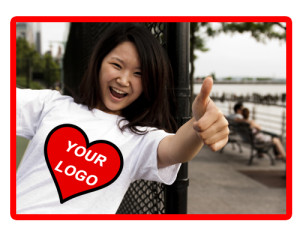 With a distinctive icon, a business can differentiate itself from its competitors and create a panache that helps that business pitch its product to potential customers. Take Nike, for instance. Their trademark “swoosh” design is so associated with athletic prowess that customers are willing to pay more—much more—for a pair of shoes wearing that design than one of similar quality without that icon.
With a distinctive icon, a business can differentiate itself from its competitors and create a panache that helps that business pitch its product to potential customers. Take Nike, for instance. Their trademark “swoosh” design is so associated with athletic prowess that customers are willing to pay more—much more—for a pair of shoes wearing that design than one of similar quality without that icon.
The design is so popular that people are willing to pay for t-shirts, hoodies, and shoes that amount to walking billboards for the athletic apparel giant. Nike has, in essence, convinced to public to do some of the company’s advertising for it, at no cost to the company except for the raw materials and labor used to make the apparel. In fact, customers pay Nike for the privilege of serving as free advertising for the company.
Similarly, the current President of the United States, Barack Obama, created a distinctive “O” logo that entered the public eye during his successful 2008 Presidential campaign. The design has been seen on everything from hoodies to belt buckles ever since.
President Obama’s design was such an iconic design, in fact, that at least one other politician has created his own version of the logo. Turkey’s current president, Tayyip Erdogan, used a similar design in his 2014 campaign for the presidency of a country an ocean away from Obama’s. Erdogan’s design, which even borrowed the color scheme of Obama’s design, was equally successful.
One needn’t be a huge corporation of the president of a world power to create an icon that will set one’s company or organization apart from the competitors. All one needs is an awareness of one’s brand and a good designer.
To come up with a logo that helps to successfully brand a business, a designer must first take a look at the company’s (or organization’s) corporate culture. For instance, in the case of Nike, the brand was associated with athleticism, with energy. The “swoosh” design, with its curvy line taking off on a tangent, suggested acceleration—a burst of energy.
In the case of President Obama, the “O” was designed as a portal in front of which ran a road featuring the stripes from the United States’ flag. The road curved off, leading toward a hopeful changed future—which was the exact theme of the President’s successful campaign.
Erdogan’s road ran through the portal, dressed in the red-and-white colors of the Turkish flag, equally hopeful, yet keeping on course through the portal. Erdogan, unlike Obama in 2008, already held one of the highest offices in his land, that of Prime Minister. His logo, though similar to that of Obama, distinguished his corporate culture by offering hope through staying the course under his leadership.
Companies that want to imitate the success of these three examples, therefore, need only do three things: 1) figure out what distinguishes their corporate culture, 2) hire a designer that can capture that culture in a distinctive logo, and 3) place that logo on all of their promotional material—from their business cards and website to custom printed t shirts and other promotional apparel, that allows supporters, as well, to engage in a company’s unique promotional strategies that sets them apart.
